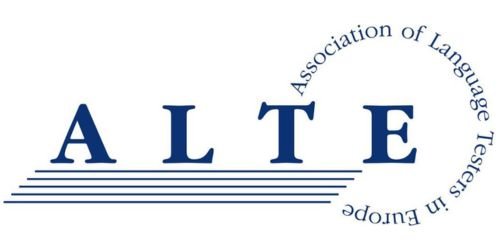The International English Language Testing System (IELTS)
The International English Language Testing System (IELTS) is a vital assessment for those aiming to work, study, or immigrate to English-speaking countries like Australia, Canada, New Zealand, the UK, or the USA. It evaluates listening, reading, writing, and speaking skills on a scale of 1-9. Owned by the British Council, IDP IELTS, and Cambridge University Press & Assessment, the test is recognized by over 11,000 employers, universities, schools, and immigration bodies, including 3,400 institutions in the USA. Developed by language specialists from English-speaking countries, IELTS provides a fair and unbiased assessment of language proficiency, featuring content reflecting real-life situations.
Exam Overview:
Click here for an overview of the test.
Where is this test recognized?
This test is internationally recognized anywhere a B1, B2, or C1 CEFR score is accepted.
Is it accepted by Global Seal of Biliteracy?
Yes! You can earn a Global Seal by achieving these scores in all sections:
Functional Fluency: B1 (4.5-5.0)
Working Fluency: B2 (5.5-6.5)
Professional Fluency: C1 (7.0 +)
In order to earn a Global Seal, candidates must meet the minimum score requirement on all sections of the test.
Is a proctor required?
All Global Seal tests require proof of a proctor. Reach out to the testing company to find more information.
When and Where does this test take place?
There are more than 1,600 IELTS test locations in over 140 countries.
What is the cost?
The cost of the IELTS depends on location of the testing center, but will average around $250.
This is the CEFR level that each score corresponds to:
| IELTS Score | CEFR Level | Description | Award Level |
|---|---|---|---|
| 9.0 | C2 | Expert | Professional Fluency |
| 8.5 | C2 | Very Good | Professional Fluency |
| 8.0 | C1 | Very Good | Professional Fluency |
| 7.5 | C1 | Good | Professional Fluency |
| 7.0 | C1 | Good | Professional Fluency |
| 6.5 | B2 | Competent | Working Fluency |
| 6.0 | B2 | Competent | Working Fluency |
| 5.5 | B2 | Modest | Working Fluency |
| 5.0 | B1 | Modest | Functional Fluency |
| 4.5 | B1 | Limited | Functional Fluency |
| 0.0 - 4.0 | A2 and A1 | Extremely Limited | DNQ (Did Not Qualify) |
In order to earn a Global Seal of Biliteracy, candidates must meet the minimum score requirement on all sections of the test. Award levels are determined by the lowest skill score.
Test Format:
The IELTS test is broken down into 4 sections and occurs over 2 days for a total of 2 hours and 45 minutes. The reading, writing, and listening sections take place in one sitting. The speaking test takes place at a separate time with an evaluator who you will have a live conversation with. Here is a breakdown of all 4 sections:
-
The IELTS Listening test consists of 4 parts with 10 questions each. The questions are designed to align with the order of information presented in the audio recordings with the first 2 parts focusing on everyday social contexts and the last 2 parts centering around educational and training settings. Test takers have approximately 30 minutes to fill in the answers on their question paper during the audio playback, followed by 10 minutes to transfer responses to an answer sheet. The test includes a variety of question structures, such as multiple choice, matching, and completion tasks, with each question worth 1 mark.
You will listen to 4 recordings of native English speakers and then write your answers to a series of questions.
Recording 1 – a conversation between 2 people set in an everyday social context.
Recording 2 – a monologue set in an everyday social context, e.g. a speech about local facilities.
Recording 3 – a conversation between up to 4 people set in an educational or training context, e.g. a university tutor and a student discussing an assignment.
Recording 4 – a monologue on an academic subject, e.g. a university lecture.
Assessors will be looking for evidence of your ability to understand the main ideas and detailed factual information, the opinions and attitudes of speakers, the purpose of an utterance, and evidence of your ability to follow the development of ideas.
-
The IELTS Academic Reading test is a 60-minute assessment comprising 40 questions, meticulously designed to evaluate a wide range of reading skills. Test takers are presented with 3 long passages sourced from books, journals, magazines, and newspapers, specifically chosen for a non-specialist audience entering university or seeking professional registration.
The test format encompasses various task types, including multiple choice, identifying information and the writer's views, matching information and headings, sentence completion, and completing summaries, notes, tables, flow charts, and diagrams. The questions follow the order of information in the text and candidates must be attentive to details to provide accurate responses.
For certain task types, students are instructed to adhere to specific word limits when writing their answers on the answer sheet. Spelling and grammar accuracy is essential as errors can lead to penalties. The test format ensures that candidates are assessed on their ability to comprehend main ideas, recognize opinions, and understand precise details conveyed in the passages.
-
The IELTS Academic Writing test is a 60-minute assessment consisting of 2 tasks. In Task 1, candidates are presented with visual information, such as graphs, charts, tables, or diagrams, and are required to describe, summarize, or explain the data in their own words. The response should be in an academic or semi-formal style and needs to be a minimum of 150 words, completed in about 20 minutes. Task 2 involves writing an essay in response to a specific point of view, argument, or problem, with a focus on providing a full and relevant response in an academic or semi-formal style. Test-takers should spend approximately 40 minutes on this task, writing at least 250 words.
The Writing test assesses the ability to present well-organized, coherent, and cohesive responses, using appropriate vocabulary and grammar. In Task 1, the evaluation centers around identifying the most important and relevant information in the visual data and presenting it accurately in an academic style. For Task 2, the focus is on presenting a clear, well-structured argument with supporting evidence or examples, demonstrating language accuracy and proficiency. It is essential to avoid irrelevance, plagiarism, and exceeding the specified word limits to achieve a favorable score.
-
The IELTS Speaking test lasts 11 to 14 minutes and is divided into 3 distinct parts, all of which are recorded for evaluation purposes. This portion assesses spoken English proficiency, communication abilities, fluency, coherence, and the candidate's capability to express themselves clearly and persuasively across a range of subjects, reflecting their language skills in real-life communication scenarios.
In Part 1, the examiner engages the test-taker with a series of general questions aimed at exploring personal information and familiar topics such as home, family, work, studies, and interests. This segment lasts approximately 4 to 5 minutes and focuses on assessing the candidate's ability to communicate opinions and information on everyday subjects.
Part 2 involves the test-taker receiving a task card that presents a specific topic and prompts them to deliver a spoken presentation for up to two minutes. The candidate is provided with one minute to prepare their response and may be asked additional questions by the examiner on the same topic during the subsequent 3 to 4-minute interaction. This phase evaluates the individual's capacity to speak at length about a given subject, employing appropriate language and effectively organizing their ideas coherently. Test-takers are encouraged to draw upon personal experiences to enrich their responses.
Part 3 encompasses a more profound and abstract discussion, delving into issues related to the topic presented in Part 2. The examiner engages the test-taker in a 4 to 5-minute dialogue, allowing the candidate to express and justify opinions, analyze, discuss, and speculate on a variety of matters. This part is designed to evaluate the test-taker's ability to articulate more complex ideas and engage in thoughtful discourse.
Additional Resources:
Click below to learn more from the test company.
The IELTS test has been awarded the ALTE-Q mark for CEFR levels A2-C2 for meeting the standards set by the Association of Language Teachers in Europe. Click the image to learn more about these standards.



